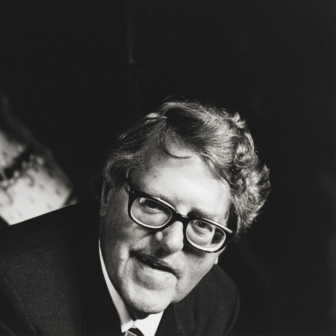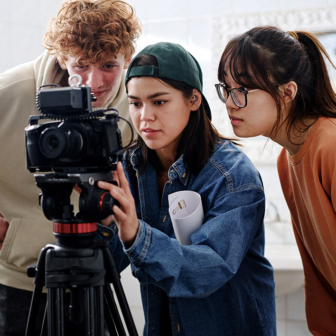Not long ago I completed the final exam for an astrophysics subject taught by Brian Schmidt and Paul Francis at the Australian National University. No, I haven’t returned to my undergraduate days: the subject was delivered through edX, a website which, like its counterparts Udacity and Coursera, provides access to massive open online courses, or MOOCs.
The ANU subject, The Violent Universe, was my sixth MOOC. Since I enrolled in edX in late 2013 I’ve completed subjects ranging from public health, climate science and statistics to an exquisite survey of visual sources in Japanese history. But my effort stacks up poorly against the gruelling course load Jonathan Haber took on when he was researching his recent book, MOOCs. Haber set himself the task of completing, in one year, enough online subjects to match the workload of an American liberal arts degree. His highly readable book presents what he learnt about MOOCs by completing them, and that allows him to cut through the sensational claims, both positive and negative, in much of the commentary on this latest educational phenomenon.
MOOCs emerged in the summer of 2011, when a group of professors at Stanford University decided to offer their computer science subjects online and open to anyone. Haber tells us that they thought enrolments might extend into the thousands. By the time the subjects began, more than 160,000 people had signed up. So began a rush by some of the most recognisable West Coast American universities, and then their East Coast counterparts, to deliver online content. By mid 2012, all three major MOOC platforms – Udacity, Coursera and edX – had been launched, with significant financial backing.
Taking an online subject on artificial intelligence from Stanford University may sound intimidating, but the emphasis of the three MOOC platforms is on easy access. I found edX far simpler to learn and navigate than Facebook, for instance. When I log on to my edX account and click on a subject, I see a list of “sections.” Generally released weekly, these are organised around a lecture – usually split up into segments of five to fifteen minutes – delivered as a YouTube video with an optional running transcript. Each segment is usually followed by a short question, most often multiple choice, to reinforce the main point. This interactivity alone sets MOOCs apart from listening to lectures delivered as podcasts or using other relatively passive online learning options.
Course sections usually contain a variety of other material, including assigned readings. In the ANU astrophysics course, reference notes, worked examples and practice questions were part of a package designed to prepare students for the weekly assignment. The standards in weekly and final assignments can be demanding. The course on climate science, run by Massachusetts Institute of Technology’s Professor Kerry Emanuel, often required answers in the form of algebraic expressions. The edX platform is sophisticated enough to interpret mathematical expressions – symbols, Greek letters and all.
The edX platform also caters for collaborative learning. Most lecture segments link to a discussion page, and some subjects encourage students to upload a short video to introduce themselves, as they would in a first tutorial. One subject on the American civil war, run by Columbia University historian Eric Foner, canvasses student opinions on a key question – say, how important was slavery to the economic development of the United States? – at the start and end of each section. Pie charts show how many students changed their mind as a result of the subject material, and they are encouraged to talk about why their views did or didn’t change on a discussion page.
Haber points out that the MOOC ecosystem also contains so-called connectivist or cMOOCs, which focus on collaborative learning and subvert the traditional teacher–student hierarchy by doing away with lectures altogether. Up until now, however, cMOOCs have failed to attract anywhere near the numbers flocking to subjects of the style available on the major platforms.
That’s not to say that platforms like edX don’t have the potential to change lecturing practices. Recording a traditional lecture, splitting it into comestible chunks and inserting revision questions might represent a cost-effective way to create a MOOC, but my experience suggests that the most effective lectures are those recorded for online delivery. This calls on quite different skills from academics accustomed to talking to a lecture hall full of students. It also gives them scope to experiment with very different presentation methods.
Paul Francis, one of the presenters of the ANU astrophysics subject, told me that he and his colleague Brian Schmidt filmed the first subject of their four-subject series four times, using feedback from colleagues to refine a style that worked. “We experimented with several approaches,” he says. “Fully scripted, non-scripted. We tried taking a Sherlock and Watson approach to the grand mysteries of the universe, with one of us asking all the questions – but it was too embarrassing.” In the end, their “lectures” switched between various formats. Some segments have the two of them standing before a Powerpoint-like presentation. Others involve Francis talking through a mathematical demonstration on a smartscreen “blackboard.” Wrap-up sessions often have Francis and Schmidt seated in chairs, debating the latest developments and future options for research.
Listening to a pair of astrophysicists discuss their field is exciting, but no university could afford to assign two lecturers to a standard undergraduate subject. Francis says that he came up with the idea of presenting the subject as a duo when he invited Schmidt to give a guest lecture in one of his subjects. The two disagreed on a particular point, and Francis challenged him after the class. The students who stuck around to hear them later wrote in feedback forms that this moment represented the highlight of the semester.
Francis sees traditional lectures as having very limited value. He suggests students benefit little from sitting in a packed theatre listening to a lecture they can’t rewind or watch again. He also says that a higher proportion of students participate in online forums than would ever speak up in a tutorial. Students of his edX class agreed. In a survey taken at the end of the subject, very few of them rated the experience as worse than a traditional lecture. About half found it comparable to a traditional subject, and half found the online experience better.
In the near future, Francis suggests, sufficiently motivated students may be able to complete a university-standard degree without incurring any debt. Those who continue to pay for the traditional campus experience may also find themselves subject to greater competition. He relates the experience of a Stanford colleague who got students from his class to take his MOOC in parallel. It turned out that the best student from the class finished fortieth in the much larger group of MOOC enrolees. This can make online lecturing rewarding. “You can attract higher-quality students than you come across in your face-to-face teaching,” Francis explains. “Participating in an international venture like edX, where you are competing with the best lecturers in the world, also forces you, as the lecturer, to lift your game.”
The million-dollar question facing the MOOC experiment is whether universities will recoup the substantial costs involved in creating online subjects. (As Haber notes, edX was founded by Harvard and MIT with seed funding of more than US$50 million.) Francis says it’s easy to underestimate the time involved by a factor of three; he joked that his colleague, Nobel-prize laureate Brian Schmidt, underestimated the task by a factor of ten. “Everybody is shocked by how much work is involved,” he said, referring to the experience of presenters across the edX platform.
If MOOCs are free (or very low cost for students who want full certification), are universities like the ANU simply doing themselves out of a job? I asked Francis what he would say to a student who turned up having completed his astrophysics series. “I would encourage the student to enrol directly in second year,” he said without hesitation. When I asked whether that meant the faculty would lose funding, he pointed out that two undergraduate subjects represent a small fraction of a standard twenty-four subject degree. Any financial loss would more than easily be made up if the online subject managed to attract undergraduates from other universities. For most faculties, Francis points out, undergraduate teaching is a loss-making exercise – the big money comes with postgraduate students. He says it is too early to tell whether the MOOC has attracted more international students to postgraduate study in astrophysics at the ANU, but he did confirm that the number of overseas students applying for summer vacation scholarships “went up by a huge factor.”
The viability of MOOCs also rides on their ability to attract students the second time around. “This is all still very experimental,” Francis says, confirming one of the major themes of Haber’s book. “We have no idea how many students will enrol in the course when we offer it again.”
Replacing lectures with MOOCs may be one way to maintain enrolments. In the middle of last year the University of Technology Sydney opened its new Frank Gehry-designed business school, which focuses more on collaborative learning spaces than on standard lecture halls. The intention there is to take advantage of “flipped classroom models,” under which students watch online lectures and come on campus for tutorials and other interactive activities.
This raises the spectre of universities buying lecture content from a select few prestigious universities and relegating lecturers to glorified tutors. But it seems too early to assess the predictions of those, like Udacity founder Sebastian Thrun, who claim that in fifty years time there will be only ten institutions delivering higher education worldwide.
What is clear is that platforms like edX provide a marketplace for fierce competition between lecturers. “When we offered the first part of our astrophysics course, there were only fifty or so courses on edX,” Francis explains. By the time he offers the subjects a second time around, he expects there to be several hundred. And indeed, not long after finishing the final exam I received an email from edX wishing me a happy new year and cataloguing an astonishing range of new subjects on topics ranging from happiness and personal wellbeing to professional skills development. Personally, I’m looking forward to the last part of the ANU astrophysics series, which covers cosmology and begins in early February. •




